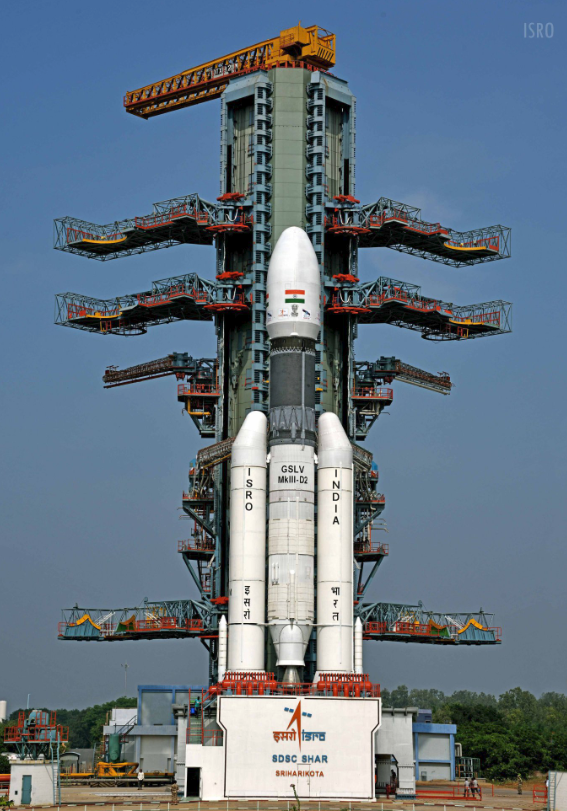
India's most powerful rocket, GSLV Mk3, which deployed a key satellite in space on Wednesday, is a vital cog in the nation's ambition for a manned space flight.
The launcher successfully deployed the 3,423kg GSAT-29 communications satellite 17 minutes after take-off from the Satish Dhawan Space Centre in Sriharikota on India's eastern coast. It was the second developmental flight of the 43-metre-tall launcher.
The satellite has been placed on a geosynchronous transfer orbit (GTO) from where it will be deployed to a geosynchronous orbit (GSO) at an altitude of about 36,000km so that it can keep pace with the earth's rotation and always beam back telecommunications signals.
The rocket's heavy lift capability is an exciting addition to the Indian Space Research Organisation's (ISRO) capability to carry humans to space.
"India has achieved a significant milestone with our heaviest launcher lifting off the heaviest satellite from the Indian soil. The launch vehicle has precisely placed the satellite in its intended orbit. I congratulate entire ISRO team for this achievement," chairman K Sivan was quoted as saying.
The satellite with a designated lifespan of 10 years carries Ka/Ku-band high throughput transponders intended to cover even the remotest parts of the country, scientists say. Several new technologies such as Q/V-band payload and data transmission through optical communication link are available on the new satellite, according to an ISRO statement.
The three-stage GSLV Mk3 with a launch weight of 640 tonnes has two solid propellant boosters for the first stage, a liquid propellant core second stage, and a cryogenic fuel third stage. The launcher can place a satellite of up to four tonnes on a geosynchronous orbit and a satellite of up to 8 tonnes on a low-earth orbit (LEO).
The GSLV-Mk3-D1, which was the first developmental flight, successfully placed GSAT-19 satellite to GTO on June 5, 2017.
The Indian dream of a manned space flight, next moon mission, another Mars flight with a reduced flight time, or the proposed flight to Venus would require such a launcher which is reckoned twice as powerful as GSLV Mk2.
ISRO targets a 2022 liftoff for its first manned flight using a GSLV Mk3. The agency will also use the launcher for its prestigious second mission to the moon – Chandrayaan-2 in January.









